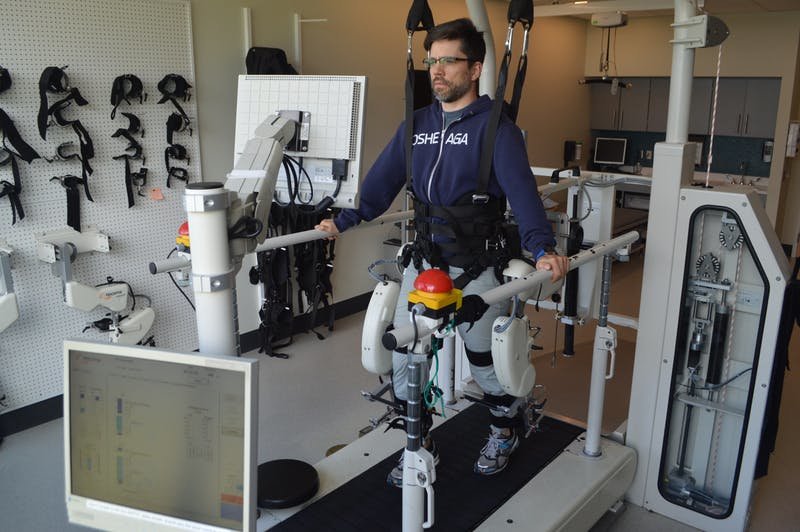Robotic Exoskeletons Reveal the Complexity Behind Every Step You Take

A new research study of high-tech medical robots arrived at a curious conclusion this week: Toddlers are geniuses.
Well, they didn't quite phrase it that way, but that's the essential takeaway from a series of studies on how machines can help injured people learn to walk again. It turns out that, from a biomechanical point of view, walking is an especially tricky business — and those toddlers are working a lot harder than we thought.
The study, published today in the journal Science Robotics, comes from Harvard's Wyss Institute for Biologically Inspired Engineering. The research involves robot-assisted gait therapy, which is in itself a pretty amazing slice of technology.
A decidedly modern approach to physical therapy, the practice involves the use of precisely calibrated exoskeleton units that attach to the legs. Patients who are learning to walk again, due to stroke or traumatic brain injury, can use these robotic systems in conjunction with a treadmill to get exacting assistance with recovering their balance and gait.
The exoskeleton helps patients by applying gentle force to the legs as the patient walks. Depending on the situation, the machine might help with straightening out the knee, or aligning the hip, or lengthening each stride. The system monitors a patient's progress, identifies problem areas, anticipates needs, and helps the body learn to walk again.
When it works, patients recover much more quickly as the body modifies its gait in response to the forces being applied by the robotic system. The trouble is, it doesn't always work — and doctors don't really know why.
“What we've come to realize over time is that proper gait recovery doesn't always happen,” said lead researcher Paolo Bonato. “It only works for a portion of the population. That was the motivation for this study.”
Sign up for the Live Science daily newsletter now
Get the world’s most fascinating discoveries delivered straight to your inbox.
Bonato and his team measured precisely how a person's gait changed in response to the exoskeleton program. To their surprise, they found that patients were adjusting their gait in response to a change in length of stride, but not to a change in height.
RELATED: Electric Coating Turns Fabrics Into Soft Exoskeletons
The scientists believe this discrepancy is caused by unconscious reactions in the central nervous system, which is primarily concerned with maintaining stability from step to step. Lifting your foot a bit higher in mid-stride doesn't destabilize you all that much. But a longer stride throws off your center of mass, causing involuntary adjustments and basically freaking out your nervous system.
This prioritization of stability means that other aspects of walking, like the height of the stride or the angle of the toes, may require treatment beyond walking in a clinical exoskeleton.
“With the haptic forces generated by the robot, we can only affect certain aspects of locomotion,” Bonato said.
RELATED: Lab-Grown Neurons Could Help Heal Spinal Injuries and Restore Movement
The upshot is, according to the new research, engineers will need to take a much broader approach when designing robot systems that help people walk again. The application of haptic technology — machines that push back and provide calibrated resistance — can only solve part of the problem.
Bonato said that researchers in the rehabilitation community are already exploring solutions that combine exoskeletons with interactive display screens or virtual reality environments. Learning to walk, it turns out, is an incredibly complex process, involving multiple cognitive systems working off visual, aural, and tactile cues.
In short, learning to walk is hard. No wonder toddlers are so cranky all the time.
Originally published on Seeker.










